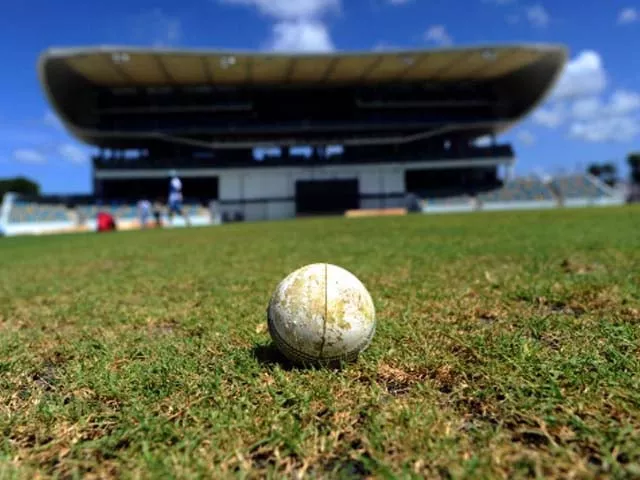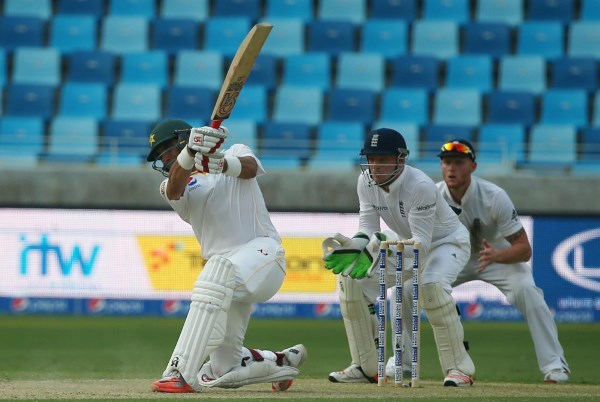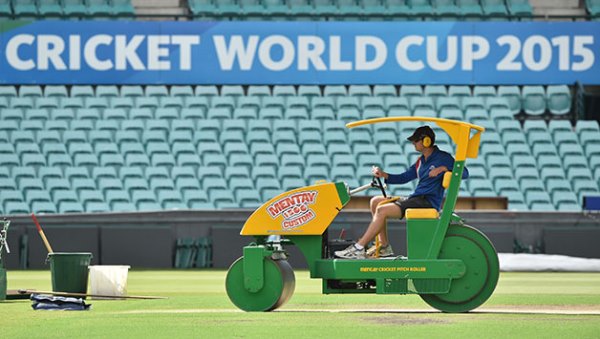
Pitches continue to play a vital role in the outcome of a cricket match. PHOTO: AFP
Is it fair for host countries to prepare pitches favouring their conditions?
This home advantage should not be termed as unfair as players should be able to adapt to all types of conditions.
The 22-yard-long cricket pitch has been of pivotal importance since the inception of the game. The nature of the strip has a bearing on the outcome of a cricket match and will continue to do so in the forthcoming years.
In the shorter formats of the game, particularly since the advent of T20 cricket, the general trend has been to prepare flatter pitches in order to neutralise the result of the toss. But the pitch still plays an extremely crucial role in cricket’s purest format, Test cricket, which is why surfaces used all over the world tend to vary according to local conditions.
For a fair bat and ball contest to take place, a pitch which provides assistance to both bowlers and batsmen throughout the entire match is generally preferred. If the conditions are skewed one way or the other, this balance goes out of the window. For instance, on an inconsistent wicket with variable bounce, no matter how a good a batsman you are, there will always been one delivery which will have your name written on it, sooner rather than later.
 Pakistan fast bowler, Shoaib Akhtar, uproots the stumps in the 2005 Test against England at the Multan Cricket Stadium. Photo: AFP
Pakistan fast bowler, Shoaib Akhtar, uproots the stumps in the 2005 Test against England at the Multan Cricket Stadium. Photo: AFPWhat’s an ideal pitch?
You will hear people talk about the need for good pitches, but what exactly is a good pitch?
In simpler terms, a perfect pitch will be freshly prepared with even bounce which facilitates faster bowlers at the beginning without discouraging stroke making. The pitch should also have a nice and even covering of grass (but not excessive covering as it tilts the balance in favour of the bowlers) in order to keep the surface from disintegrating quickly.
As the game progresses, natural wear and tear will also assist spinners without turning the pitch into an absolute dustbowl. A dustbowl is a surface which is extremely dry and cracks pretty quickly, hence making it nearly impossible to counter spin due to variable bounce and excessive turn. In an ideal scenario, this is how you want a cricket pitch to behave, but that is not always the case.
Home advantage
Naturally, a pitch is more likely to suit the home side as conditions in one specific continent are not expected to be similar to conditions in another. Tracks in the subcontinent largely suit the spinners as the game progresses, whereas pitches, let’s say in Australia, are more conducive to fast bowling with pace and bounce.
This home advantage should not be termed as unfair as players should be able to adapt to all types of conditions.
Having said that, a home side should not unfairly use this benefit for its own good. For instance, preparing a rank turner in Asia against an overseas side will lead to the match ending within three days, a sight most of us do not want to see.
Only the better sides in world cricket are able to consistently win away from home and the ability to do well away from home is what separates the best from the rest.
Commercialisation
The commercialisation of the game has meant that more result-oriented pitches are preferred, even if it compromises on the quality of cricket. Financially, it is in the better interest of the organisers, including the broadcasters, to ensure that matches go the distance. Hence the increase in batting-friendly pitches.
White-ball cricket has seen the rise of batsmen easily scoring 350-plus runs. Although this is good for entertainment from fans’ perspective, it’s unreasonable for bowlers since they get hit all over the park with little or no assistance from the pitch.
To ensure cricket’s survival and especially Test cricket’s survival, there is no harm in adhering to the needs of the broadcasters. Though that does not mean that bowlers and batsmen are not given a fair chance, which is why striking a balance is absolutely necessary or else the competitive nature of the game diminishes.
Dead pitches
Dead pitches are a menace if not anything else and spark no interest in bowlers or the audience. Perhaps their only benefit is that batsmen get a chance to swell their records, but at the expense of bowlers who bend their back without any reward.
The results of the Pakistan versus England Test match at Abu Dhabi in October 2015 and the India versus Sri Lanka Test match in August 1997 are examples of dead pitches. Both matches witnessed teams amassing more than 500 runs in their respective innings.
 Pakistan’s Misbah Ul Haq plays a shot during the first day of the second Test cricket match between Pakistan and England in Dubai on October 22, 2015. Photo: AFP
Pakistan’s Misbah Ul Haq plays a shot during the first day of the second Test cricket match between Pakistan and England in Dubai on October 22, 2015. Photo: AFPDead pitches such as these help the progression of the game in no way whatsoever, which is why they should be avoided and curators should be reprimanded for preparing such a track.
Pitch preparation
Normally, pitch preparation is not entirely the responsibility of the curator, since input from the home team and the board as to what kind of pitch they want will always be required. Although the International Cricket Council (ICC) rules state that preparing the strip is the responsibility of the host country, but that should not mean that the conditions are drastically altered in order to favour the home side.
 Andy Atkinson, ICC pitch guru, supervised the preparations ahead of World Cup semi-final between India and Australia. Photo: AFP
Andy Atkinson, ICC pitch guru, supervised the preparations ahead of World Cup semi-final between India and Australia. Photo: AFPPerhaps it would be better if there is no interference from the board and captains and the responsibility of pitch preparation is left entirely to the curators. When this happens, it’s likely that good curators will be inclined to focus on preparing a pitch which stays true during the entire course of a match and does not distort the balance between the bat and the ball.
Heart of the game
Pitches will continue to play a vital role in the outcome of a cricket match. Considering that they will always be the heart of the game, ICC should keep a close eye on how a pitch behaves during every match so that no team is able to derive an unfair advantage from the strip and overpower their opponents.




COMMENTS
Comments are moderated and generally will be posted if they are on-topic and not abusive.
For more information, please see our Comments FAQ